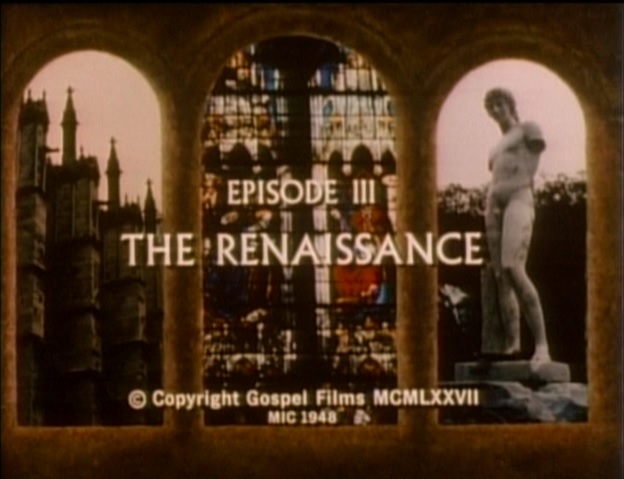This is the third regular installment in a series of posts as I rewatch a 1977 documentary film called How Should We Then Live? If you’re reading this series for the first time, I recommend starting with the project introduction. Today’s episode is “The Renaissance.”

This week’s episode of How Should We Then Live is even more ambivalent about its subject than the episode on medieval Europe was.
It’s also, I would say, less focused on history as such. That is, today’s episode is more an interpretation of art history, which is its own academic discipline. But Francis Schaeffer is still making claims about Europe’s intellectual and cultural evolution. He is using the art of the Renaissance to support his overall argument that we must base our social life on a foundation of Protestant Christian values if we want to preserve both order and freedom.
I would say this episode seriously taxes Schaeffer’s approach. For him, the Renaissance, like the medieval period, is just too likable to work well for his argument. Intellectually, he needs the Renaissance to show signs of decay, or at least the causes of decay—signs that Europe was slipping toward the despair that he associates with post-Christian modernity. His argument needs the Christian humanism of the Renaissance to prefigure the secular humanism that Schaeffer finds so threatening in the 20th century.
Yet in this episode, we see Schaeffer, a sort of evangelical dissident from mid-20th-century fundamentalism, absolutely revel in Renaissance culture. His enthusiasm, however much it may be mixed with skepticism, is infectious.
The other thing today’s viewers will find extraordinary about this episode is the absurd level of access Schaeffer’s crew had to some of the masterworks of European art.
Continue reading “How Should We Then and Now: Ep. 3 (The Renaissance)”

